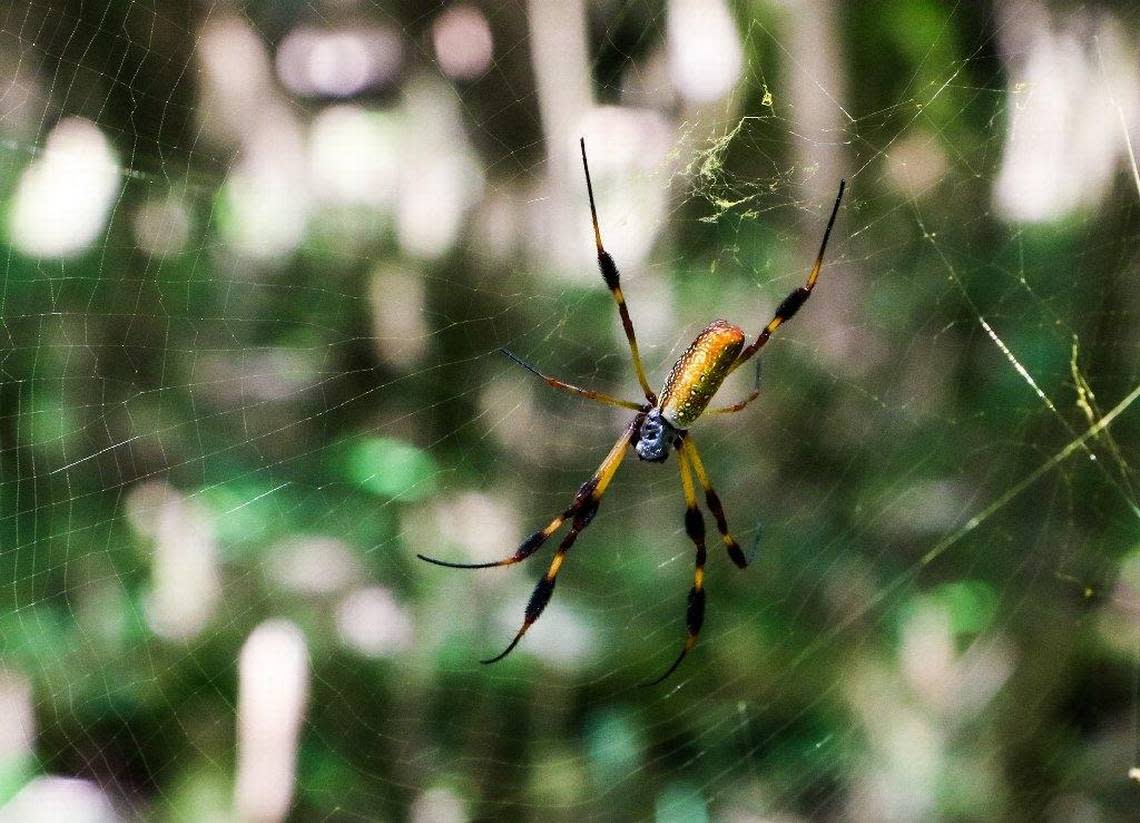Giant banana spiders will soon return to SC yards. Here’s when and what to know before crossing one
Many love the taste and smell of the banana, but there is one critter found around South Carolina donning the colorful fruit’s name that you might want to avoid.
The banana spider.

This arachnid is a frequent and often uncomfortable sight for those who don’t favor acknowledging the state’s many spider species.
In South Carolina, the banana spider refers to what is also called a golden silk orb-weaver (Nephila clavipes). This arachnid species is a common American spider that can be found throughout the country.
“The golden silk orbweaver is a tropical climate spider. Its name comes from the color of its spider silk. The threads have a yellowish hue to them,” according to Insect Identification, a notable insect identification website.
These spiders can frequently be seen throughout the state of South Carolina and are mostly found mid-to-late summer. They are also an especially common sight in the Lowcountry region as they prefer to be in high humidity environments.
Although there are actually several different types of spiders throughout the world that are called a banana spider, they aren’t all related.
Other spiders that can be referred to as banana spiders include the red-faced banana spider (and other Cupiennius), Brazilian wandering spider and the Hawaiian gardening spider.
What do they look like?
Banana spiders in South Carolina can grow to be quite large, which may be alarming to any unsuspecting passerby who happens to cross one’s path. In addition, they can be quite brightly colored.
“Banana spiders get their common name because their abdomen (back section) is a bright yellow. Female banana spiders can be 3 inches or more across with their legs spread out, while males are rarely more than 0.5 to 0.75 inches across. The black sections on their legs are fuzzy, like a bottle brush and their cephalothorax (the front body part, where there are eyes and legs) is a whitish color,” according to the Clemson Cooperative Extension Home & Garden Information Center through Clemson University.
Aside from size, both the male and female spider appear different from each other in coloration.
“The female has yellow spots on a light orange/tan abdomen, while the males are dark brown and often go unnoticed completely. The females’ legs have brown and orange bands with two furry tufts on each leg, save for the third, shorter pair,” according to Ehrlich, a pest control company.
Where are they found?
These spiders don’t tend to shy away from any potential predators.
If you’re ever out doing yard work, walking a nature trail or riding your bike, it’s best to watch out.
Banana spiders in South Carolina have a knack for creating substantially large webs and will even sit right in the center of them.
Generally found in trees or tall bushes, this is not a web you want to walk into.
“They build webs up to 3 feet in diameter and sit, head-down, right smack in the center of them. This spider does not hide from its prey,” detailed Insect Identification.
Golden silk orbweavers prefer to weave their webs in locations that are on a slight incline as opposed to a location that provides a more vertical set-up, which is common among orb-weaving spiders.
“These webs are incredibly strong with intricate designs. Female banana spiders weave the giant webs in forest areas, often along walking trails. They can even adjust the silk’s yellow hue to match the area’s sunlight conditions, making the web difficult to see. While this is primarily for the purpose of catching prey off-guard, it can also make webs inconspicuous to unsuspecting hikers,” according to Ehrlich.
Can they be dangerous?
Although their size and bright coloration might be alarming, these arachnids are known for being gentle and overall harmless and only bite when they feel threatened.
“This spider will only bite if you hold or pinch it, and the bite is not likely to be dangerous. You may feel pain and notice redness where the spider bites you, but these usually disappear quite quickly. The pain is typically less than a bee sting would cause,” according to healthline.
